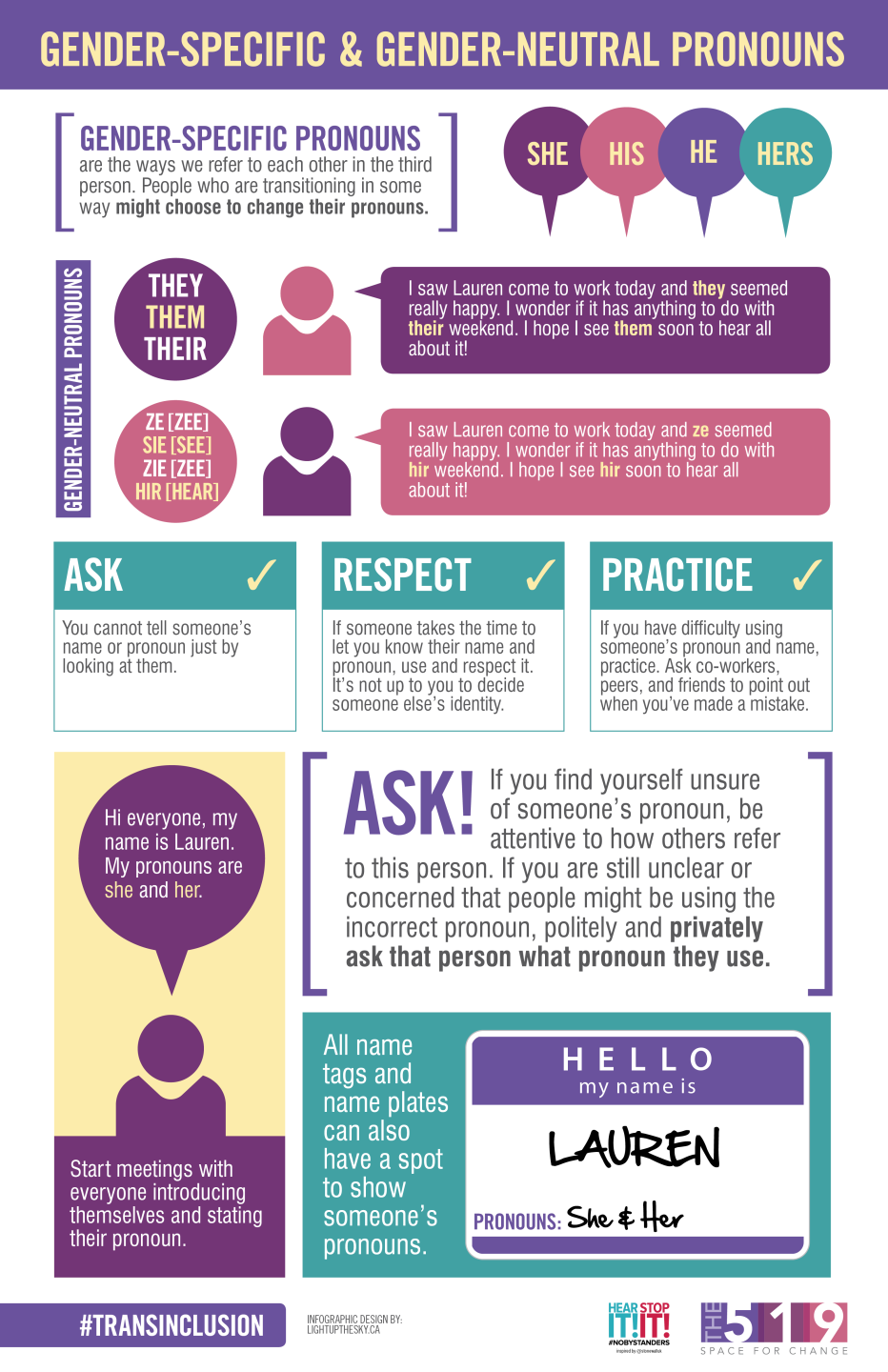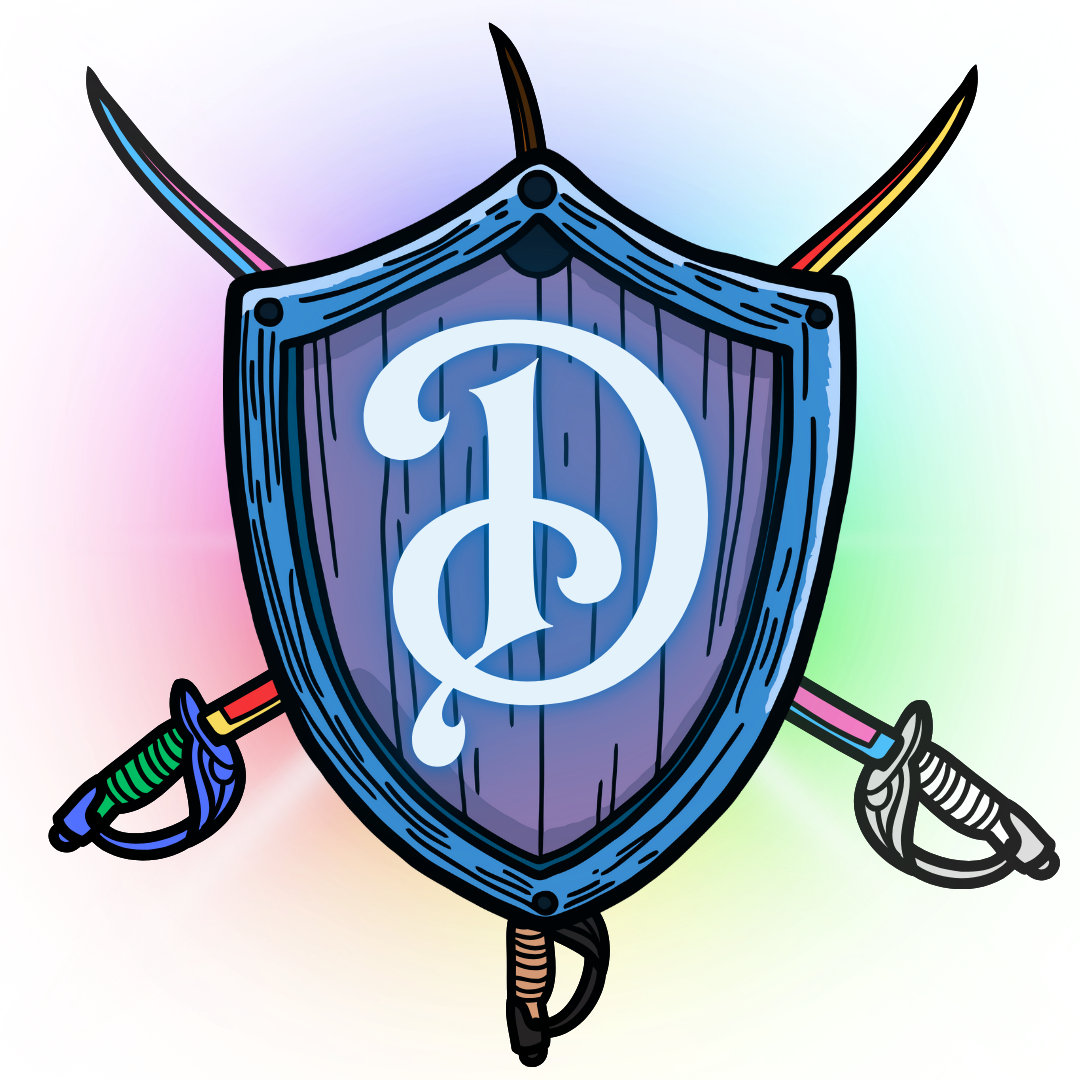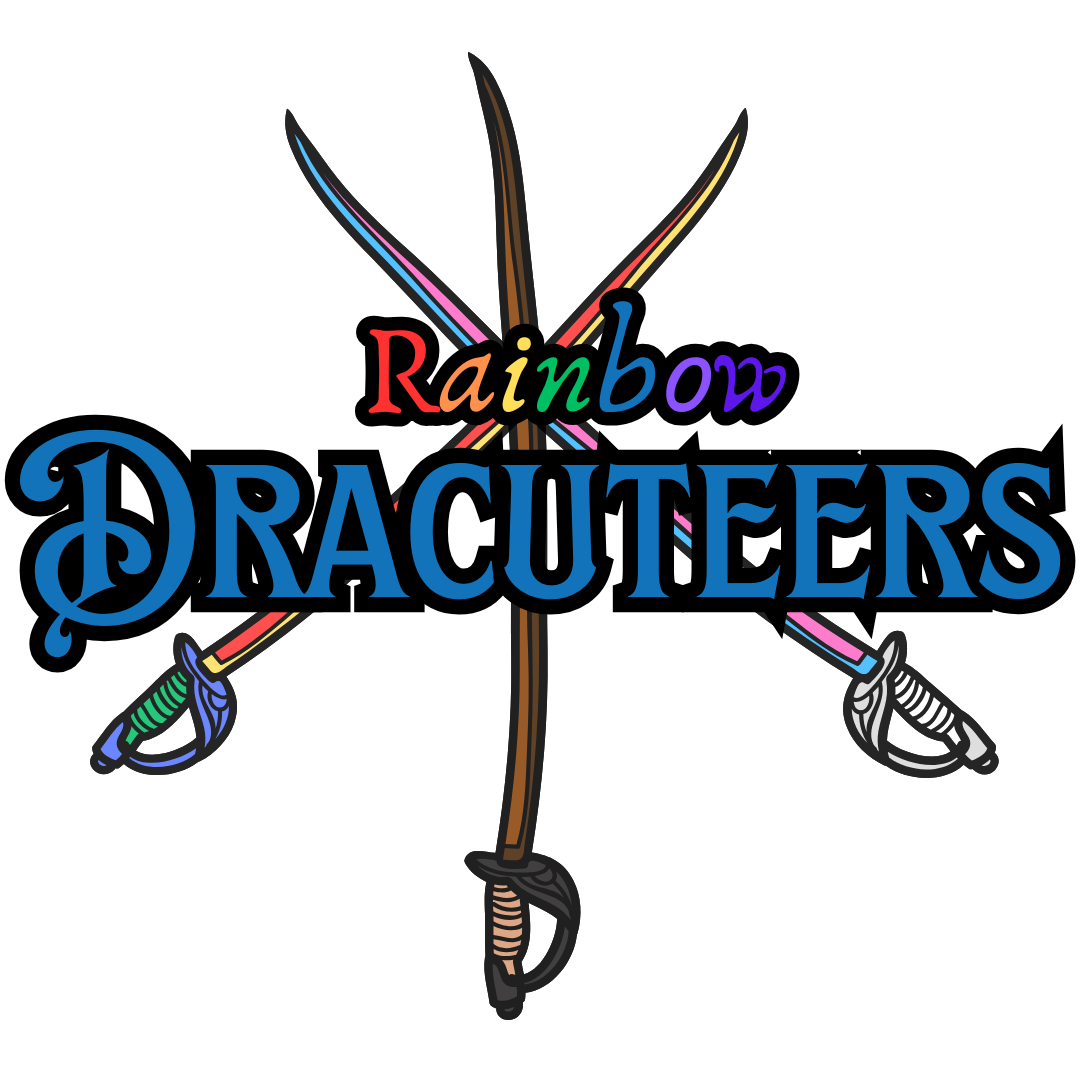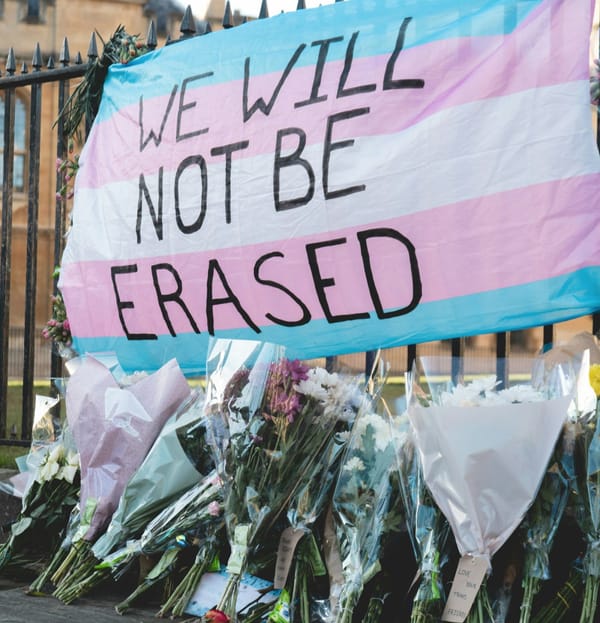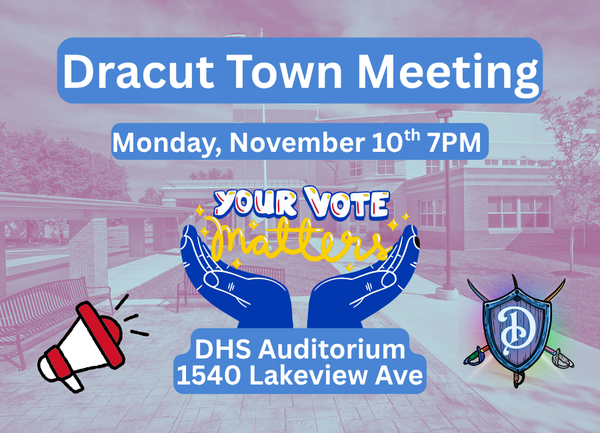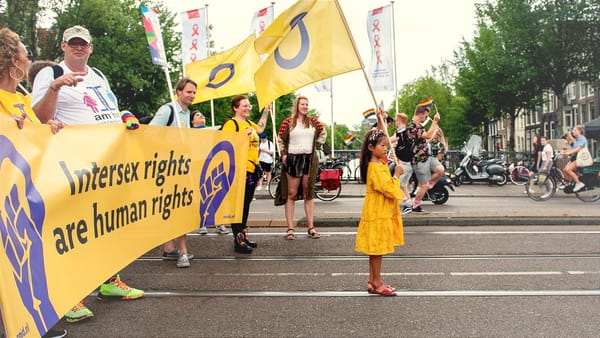A Basic Pronoun Guide for Allies
Have some questions about all the hubbub around pronoun usage? No sweat! We have a nifty guide to help understand & engage with the topic~

What's all this hullabaloo about pronouns these days? It seems everyone & their chiropractor is talkin' about them! Some folks seem pretty peeved about a basic facet of language. Why?

Why, indeed! Pronouns don't have to be this big, scary topic. Many cisgender allies sometimes agonize over getting pronouns right and worry about how they'll look if they get a trans or queer person's pronouns wrong. But worry not! Rainbow Dracuteers is here to help guide you through pronoun use in a way that's inclusive, educational, & easy to understand.
More specifically, we're talking about personal pronouns—the he/she/they of it all. (Though there's more options than those three, but more on that later.) Most often these pronouns are used to talk about a singular human in the third person. (She went to the gym/He lives in a cabin/They love eating apples.) In the English language, the most common third person pronouns are she, he, & they. (With I being first person, & you being second person pronouns.)
There are four syntactic forms that these pronouns take: subjective, objective, possessive, and reflexive. Below you'll see a table of English language pronouns in each of their forms. The list is a lot longer than the ones used in grade school! Those additional words are neopronouns—language created by & for non-binary and genderqueer people who find that traditionally gendered pronouns don't accurately reflect their authentic sense of self. While less common, it's still helpful to be aware of in case you find someone using these neopronouns out in the wild!
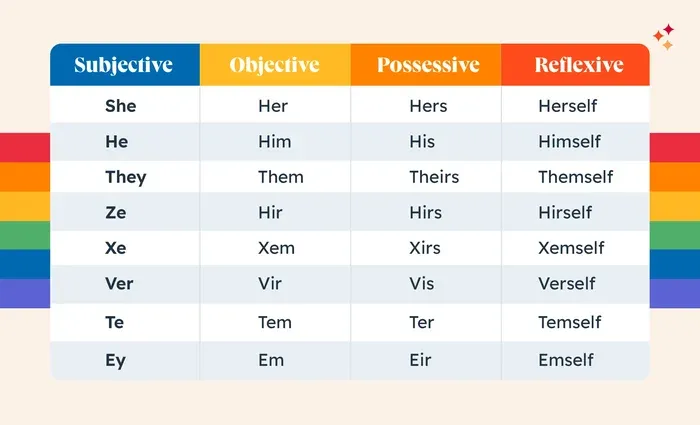
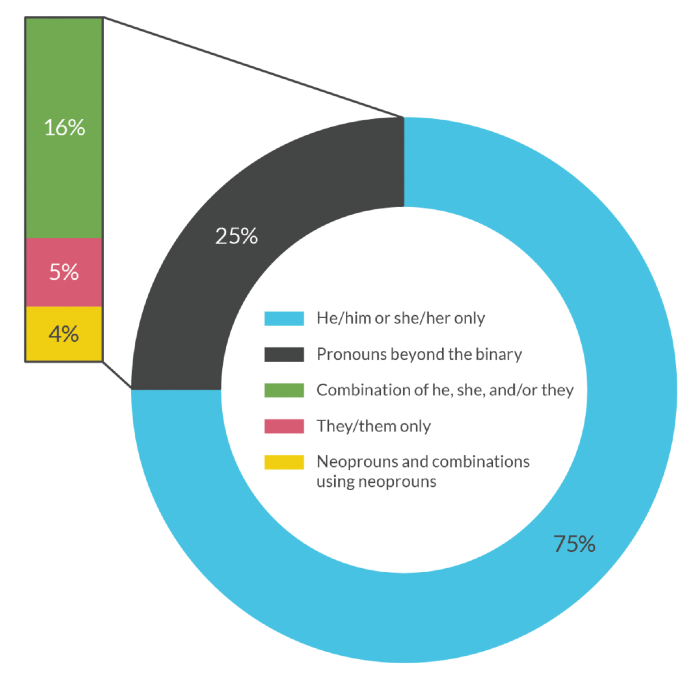
The relationship between LGBTQ+ people and pronouns is one linked with mental health, wellness, & community acceptance. That's why it's so important to learn how to approach the topic tactfully & with good intentions.
With that, let's get into some helpful tips & guidelines!
Want to join the conversation? Sign up for our newsletter & gain access to commenting on future posts!
Offer Your Pronouns, Too
Many of us (myself included) were more-or-less taught to assume the gender of someone based solely on their appearance. This is ingrained in a lot of folks and it takes work to dismantle. In truth, we can't know someone's gender based solely on their body or aesthetic expression. To combat the instinct to assume someone's identity & pronoun usage, creating a space where pronouns are coupled with name introductions is paramount.
"Hi there! I'm Kaye, I use they/them pronouns, and I'm pleased to meet you!"
"My name is Robb with two b's, he/him."
"Salutations, friend. I'm called Brick Stone and my pronouns are ze/hir/hirs."
Offering your pronouns isn't something that should be relegated only to LGBTQ+ folks. Cisgender allies can make a huge difference by normalizing the sharing of one's pronouns. These can go on name tags, inside email signatures, and introduced in greetings, to name a just a few common use cases.
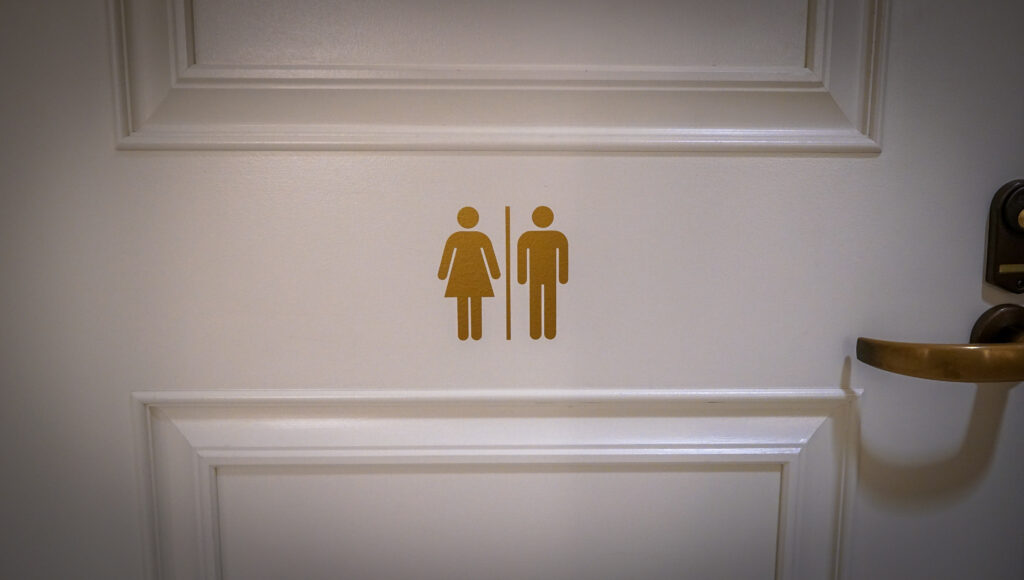
Practice, Practice, Practice
The only way to improve using new pronouns (either new to you, or new to a recently-out queer person) is to practice! Believe it or not, the queer person will also be practicing their own pronouns, too. After all, they've developed a linguistic habit, too! (And let me tell you, it feels tremendously awkward to accidentally misgender oneself!) Try practicing in conversation with friends or co-workers, especially if you're having trouble transitioning to new pronouns and names. You can also practice by yourself, either in your head or aloud. Finding little moments, like on a car commute to work or while folding laundry, can add up to substantial solo practice time!
"Hey, I want to help support Jade. Can we practice her pronouns?"
"Sure! Jade is a lovely co-worker. She showed me some cat pictures yesterday."
"She did? Awesome! His—sorry, her—cats are the cutest!"
"Absolutely! She adopted them a few years ago when she lived by herself."
An excellent web-resource to practice using pronouns is this app created by Minus18, a youth-led Australian organization for LGBTQ+ kids, teens, & young adults. It helps show you each syntactic form of the pronoun and has a list that includes quite a few neopronouns! It plays like a little educational game one might find in a school computer lab. Simple, fun, & informative!
Use Gender-Neutral Language
Promoting the use of gender-neutral language helps to craft an inclusive environment. Because many queer folks fall outside of the gender binary, a traditional ladies & gentlemen at the top of a gathering categorically excludes those individuals from the greeting. The added benefit of gender-neutral language is that it also combats sexist language than continues to ingrain itself in some everyday words such as mailman or mankind.
Using gender-neutral language doesn't have to be a dour exercise, either! Language is inherently playful, and it can be wonderful diving into new ways to greet or name things out in this big, wide world of ours. Below you'll find a variety of gender-neutral options for frequently gendered language (with some fun options along the way):
Ladies & gentlemen ➡️ Esteemed guests/valued patrons/folks
brothers & sisters ➡️ siblings
boys & girls ➡️ students/children/kids/young'uns/youth
brother from another mother/sister from another mister ➡️
sib from another crib
wassup, guys ➡️ wassup, nerds/dorks/comrades/y'all/friends/everyone
femme fatale ➡️ them fatale
gentleman ➡️ gentlethem
mailman ➡️ letter carrier
fireman ➡️ firefighter
boyfriend/girlfriend ➡️ partner/significant other
husband/wife ➡️ spouse/other half
Son/daughter ➡️ child/progeny/offspring/spawn
fiancée/fiancé ➡️ betrothed
niece/nephew ➡️ nibling
mother/father ➡️ parent
aunt/uncle ➡️ pibling/auncle
waiter/waitress ➡️ server
freshman ➡️ first-year student
mankind ➡️ humankind
And for the most fun & SPICY way to address a crowd, take a page from the English dub of Sk8 the Infinity:

The move for more gender-neutral language is primarily used in settings with many people or with folks you don't personally know. Every individual is entitled to identify with & use whichever gendered labels they want! Utilizing gender-neutral language more often is an effort to craft a policy of inclusive language rather than a mandate to override & overwrite all gender-specific words.
Check-in With Your LGBTQ+ Co-worker/Friend/Family Member
Sometimes, transgender and genderqueer people aren't ready or able to fully come out as their authentic self. This can create a tricky situation when they're out to some people but not all. In order to avoid accidentally outing them publicly, check-in with them and see what pronouns they'd prefer you use publicly versus privately. (Additionally, know that it's a privilege to be trusted with such personal, vulnerable information from your queer companion. Honor that trust by doing your darnedest to keep them safe and allow them to come out on their own time.)
Mistakes Happen—Don't Dwell on Them
It takes time to rewire our brains to configure to new linguistic patterns. This is especially true for someone you've known one way, and now wish to support after they've transitioned into using a different name & pronouns. Mistakes will happen! How you handle the mistakes is what's most important.
Whenever you misgender someone and either need to correct yourself, or you are actively corrected, the most important thing is to fix the mistake and move on. Do not dwell on the error. As someone who is routinely misgendered, I can attest to how absolutely draining it is when the person who misgendered me starts self-flagellating and requires me to emotionally care for them, despite the fact I'm still hurting from the initial blunder.
An example of what NOT to do:
"Kaye loves videogames. She's especially—"
"They."
"Oh, right. Sorry, so sorry! THEY'RE especially good at Galaga. Oh God, I'm SO sorry. You know I didn't mean it, right? I promise I'm not a bigot! It's just so HARD to use singular they/them. It doesn't sound right!"
An example of what TO DO:
"Kaye loves videogames. She's especially—"
"They."
"Oh, thanks. They love videogames, and they're especially good at Galaga. They even got a high score on one of the arcade machines in Laconia!"
Either a quick thank-you for the correction, or a brief apology, is all that's necessary before moving forward with the correct pronoun. No need to make the conversation about the mistake. I promise you the trans, non-binary, or genderqueer person in question just wants the problem fixed and for the day to carry on normally.
But What About Grammar?
A tired ol' chestnut I've heard time & again as a non-binary they/themmer is that singular "they" is GrAmMaTiCaLlY iNcOrReCt.
This is false. The singular they/them has been in casual use for centuries in the English language. While the conjugation around verbs for singular they/them can be tricky, utilizing that pronoun for one person is perfectly fine. Folks do it all the time!
"Oh, someone left their wallet here."
"Did that person just drop their car keys?"
"Whoever's driving that truck doesn't know how to use their directionals!"
Additionally, grammar itself isn't truly prescriptive, but descriptive of how we use language. If English grammar rules were strictly prescriptive, we'd all still be using thee, thou, and thine! (Hey, thou hast excellent rizz! What is thine secret to being so popular on ye olde Tiktok?) The reason grammar rules exist at all is for language to be clear & understood. The rules of grammar change and evolve along with language.
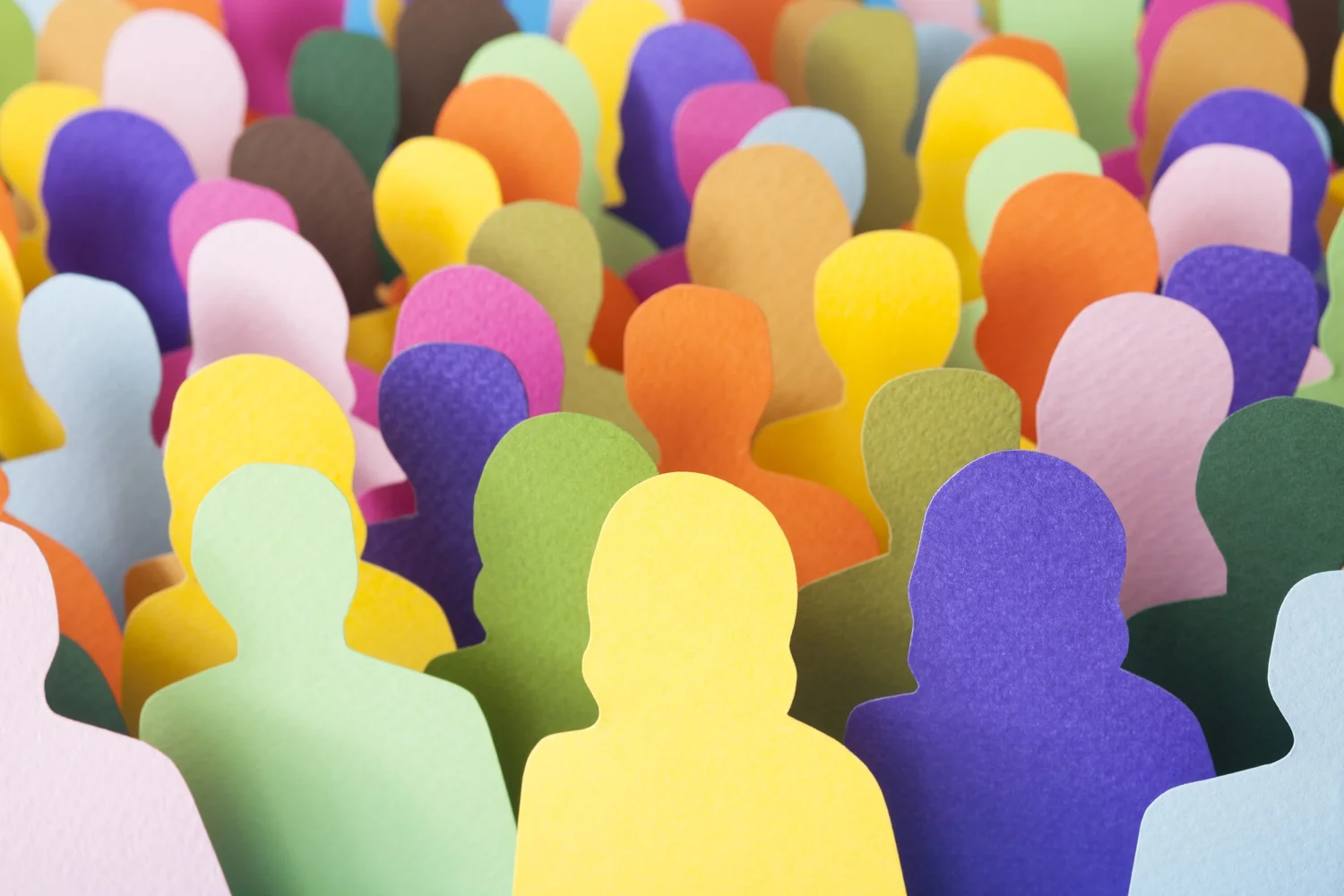
Multiple Pronouns? No Problem!
Some genderfluid & non-binary folks may very well accept multiple different kinds of pronouns. (She/they & he/they being some of the most common, but by no means only, combinations.) While this means the individual accepts either pronouns, it does not mean they want you to exclusively use one or the other. If someone lists multiple pronouns—or, indeed, accepts all/any pronouns—it usually means the individual wants people to use the different pronouns interchangeably.
It's always best to check with the individual person to see what they prefer when it comes to fluid pronoun usage. Some folks have a more laissez-faire relationship with gender! Others may feel best seen & respected when each of their accepted pronouns is used in combination with one another.

Thank you for reading, dear allies!
Pronouns are not the be-all-end-all of queer identity & allyship. For certain, it's an important aspect for many of us. Using the correct language for another's identity is a small but deeply impactful act that helps to affirm their identity & know they are welcome.
Accidental misgendering hurts, but what hurts more is when someone puts in zero effort to learn a new name and/or pronouns. LGBTQIA2S+ folks just want to feel safe & accepted for who they are. It truly makes a difference when our loved ones & allies make the effort to use the right language around us.
Learning takes time. Mistakes happen. The effort & intent matter most.
Hopefully this guide will help all you lovely allies out there, as well as anyone interested in learning more on the topic of pronouns & gendered words in the English language!
